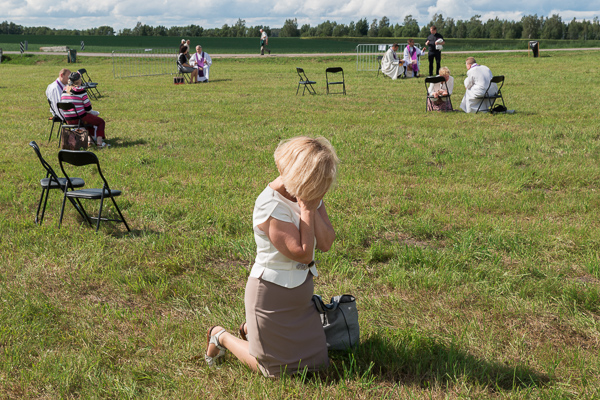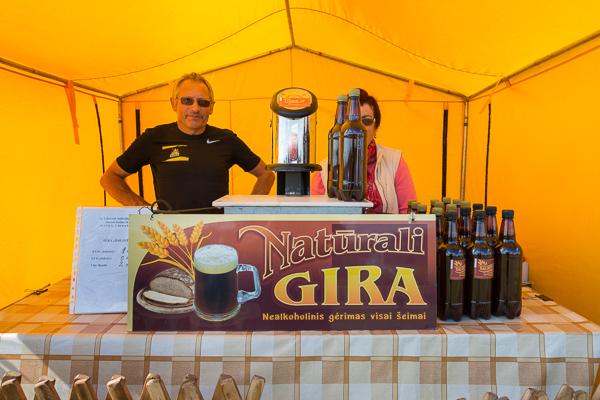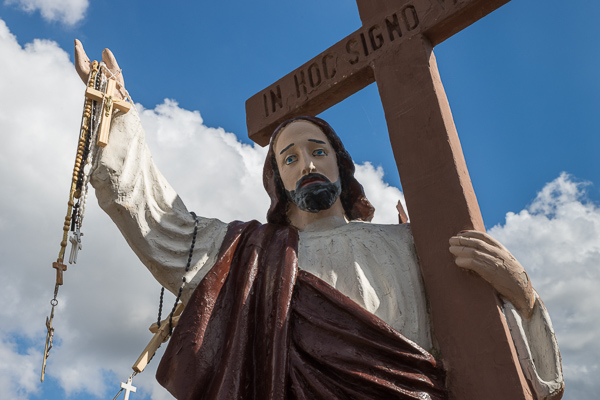Photographs: 19
Publication: 2016 |
| |
|
|
 |
| |
|
|
Hill of Crosses
The Baltic sky stretches out eternally, reaching out to meet the green expanse of the meadows below. Amidst this vast landscape in northern Lithuania there rises a small hill. They call it the Hill of Crosses. It's a pilgrimage site with some unique symbolism. It's Sunday now, and the pilgrims are out in full force. It is said that leaving a cross at this location will bring someone luck, and there are many devotional items being sold here. Both small and large crucifixes are planted in the ground and they line the path from the parking lot to the mountain. Nearby, refreshments are sold, and you have the choice of cooled Gira (a Lithuanian beverage, made from bread) and espresso to go, served from a mobile café set up in a car trunk. A talent for improvisation also manifests in the open-air confession. Simple folding chairs turn into confessionals, and perhaps it is just a coincidence that today, only women are seeking a sympathetic ear for their sins. |
| |
|
| |






|
| |
|
| |
Once you enter the mountain,
a bizarre and lurid world appears. Crosses as far as the eye can
see. Some are made of wood, others of metal or plastic. Just as
different as the materials used are the styles that go with them.
Artfully decorated models can be found next to rudely cobbled exhibits.
Large crosses are hung with a hundred small ones. The last gaps
are filled with rosaries to provide colourful accents to this fractal
thicket.
|
| |
|
| |


|
| |
|
| |
The weather-scarred
figures often hang from the crucifixes by a proverbial thread,
and remind us of those Lithuanians who were murdered and deported
during Czarist and Soviet rule. These people had to fight for centuries
to win their independence. Just as it did in Poland, the Roman
Catholic Church took on a political role in Lithuania and formed
a powerful opposing force. At the start of the 1960s, the Soviets
arrived with bulldozers and the crosses were mown down and burned.
But over the next few nights, more were raised by the populace,
and the site became a symbol of national resistance. The grappling
around the mountain would ultimately last more than twenty years:
The Soviets left, and the crosses stayed. |
| |
|
| |





|
| |
|
| |
When the wind lifts
up and sweeps over the trillions of interlocking crosses, a gentle
ringing and rattling mixes with the silence. A mystical atmosphere
which is inescapable, even for those for whom the religious imagery
might be remote. Whether as a sacred pilgrimage, as for most of
the visitors, or the site of bizarre cults – ADVENT TV has its
satellite broadcast van on site to report it either way. |
| |
|
|
|
 |
|